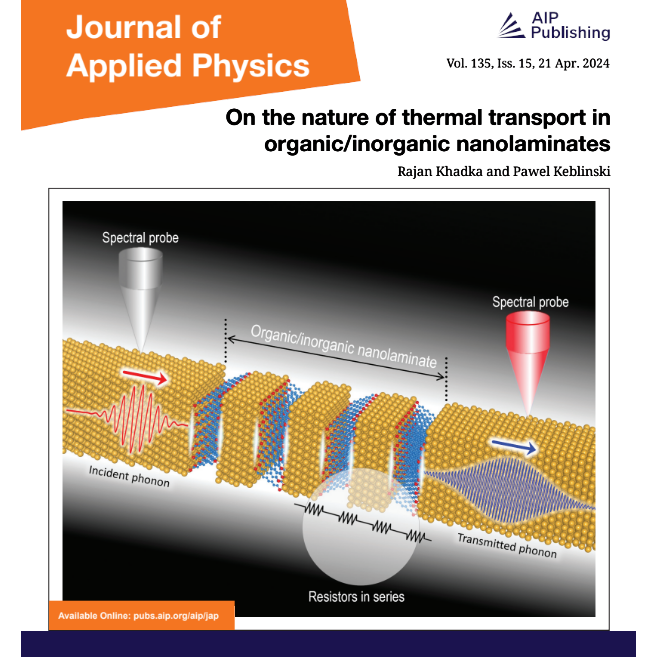
Precise control of heat flow in thin film nanolaminates, i.e. composite layered materials ultra-thin layers separated by heterogenous interfaces, is critical for various engineering and technological advancements. Understanding how heat travels within these structures and the ability to fine-tune this process holds immense potential across diverse fields. This knowledge is essential for developing next-generation thermoelectric devices, thermal barrier coatings, or to limit thermal dissipation bottlenecks in microelectronic materials.
A new computation research work executed by Rajan Khadka, a materials science and engineering (MSE) student under the guidance of Dr. Pawel Keblinski, professor, and department head at the MSE department at Rensselaer Polytechnic Institute, have unveiled the interfacial bonding strategies for tuning thermal conductivity of organic/inorganic nanolaminates from low to ultra-low regimes. Via a detailed examination of how the individual thermal waves, i.e., phonons, propagate across multiple interfaces in nanolaminates, the research duo exposed the nature of thermal transport in nanolaminates and pointed towards a new approach for conversion of longitudinal to transverse acoustic waves. A combination of research significance and graphical appeal led to their publication entitled “On the nature of thermal transport in organic/inorganic nanolaminates” to be featured as a cover article in the Journal of Applied Physics. Independently, the same work, as well as Rajan Khadka, were recognized by the MSE department by the 2024 “Norman S. Stoloff Research Excellence Award.
Dr. Keblinski, an expert on interfacial heat flow at the nanoscale, said that in addition to practical importance of interfacial materials and the central role of thermal dissipation in any active devices or systems generating heat, the results of this work provide yet another example of an interesting pattern: In materials with high density of interfaces, individual phonons scatter with high degree of coherence at multiple interfaces leading to strong interference effects. However, the overall thermal transport, which represent an integrated contributions over all phonons, behave as if each interface acts as an independent scattering center. This, despite a complexity of phonon scattering processes, allows to describe thermal transport in high interfacial density materials via a simple model of independent interfacial thermal resistors connected in series.
